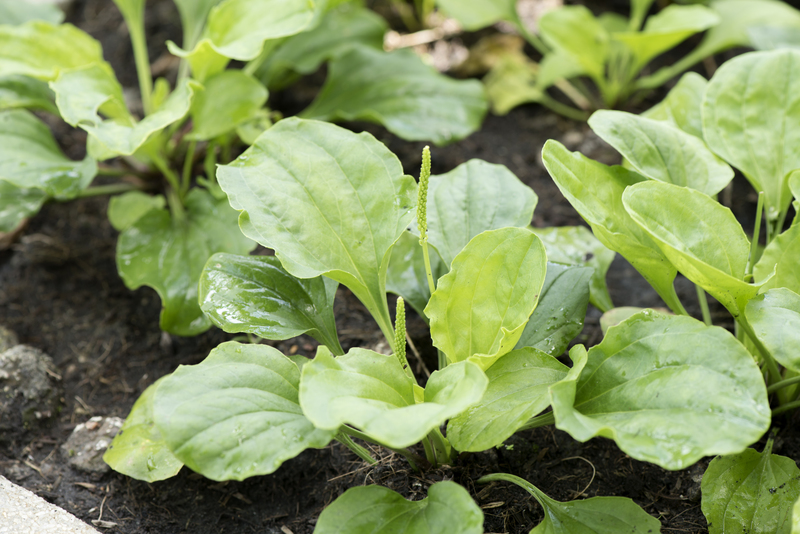Best Ways to Store Produce
Posted on 18/09/2024

When it comes to storing fresh produce, keeping food safe and healthy is the main focus. Properly storing your fruits and vegetables will help maintain their flavor, texture, and nutritional value. Knowing the best storage methods for different kinds of produce can help you get the most out of the food you buy.
One of the most important steps in preserving your produce is selecting items which are fresh and free from blemishes or damage. If possible, choose organically grown fruit and vegetables with firm skins that are free from bruises and cuts. Once you have selected your produce, take it home immediately and store it properly to maximize its shelf life.
General Guidelines for Storing Produce
When it comes to storing fresh produce, there are a few general guidelines that should be followed:
o Make sure any food being stored is clean. Rinse off dirt and debris before storing.
o Discard any packaging materials such as wraps or bags before storage.
o Store away from direct sunlight and heat sources to prevent spoiling.
o Do not store fruit in plastic containers or bags unless specifically stated by the manufacturer that they are designed for holding fruit. This prevents damage to the skin from condensation build-up inside.
o Separate different types of fruits and vegetables so that one type does not cause another to ripen more quickly than desired.
o Eat spoiled or bruised pieces first so they don't contaminate other items in the refrigerator.
Refrigerate Fruits and Vegetables
Many types of fruits and vegetables do best when stored in the refrigerator at temperatures between 35-38?F ~ 2-3?C). This includes citrus fruits, grapes, berries, melons, leafy greens, root vegetables like potatoes and carrots, mushrooms, tomatoes, cucumbers, peppers, peas, beans, asparagus, squash, corn on the cob, and avocados (when ripe).
If you plan on eating certain fruits within a short time frame after purchasing them (e.g., apples and citrus), it is best to keep them in a cool place like a cellar or porch before putting them in the fridge - this helps keep them firm and crisp for longer periods of time. Additionally, removing pre-packaged plastic wraps around produce can help keep moisture out - however make sure to place freshly washed fruits in a container with lids that seal well if kept in the fridge for more than a few days at a time.
Room Temperature Storage
Many types of produce require room temperature storage instead of refrigeration - this includes bananas, onions (except sweet onions), garlic papayas, pineapple (ripe only), mangoes (ripe only), peaches & apricots (ripe only), passionfruit (ripe only) , apples (ripe only), persimmons (hard & puffy ripe only). It is important to note that certain fruits may cross over categories -- some types of apples should be refrigerated because they will spoil quickly if left at room temperature while others can be kept outside of refrigeration until ripe enough for consumption -- as such labels on packaging should always be read thoroughly to ensure proper storage techniques are used when applicable. Additionally some items like squash can also be safely stored outside due to their thicker skin but should still remain dry -- this can either be done by keeping them out of direct sunlight or using an airtight container/bag with holes poked into it for ventilation purposes when needed.
Freezing Fruits and Vegetables
For those who plan on freezing fresh fruits or vegetables either as part of meal preparation or simply an easier way to store goods long-term -- make sure whatever item being frozen is blanched first prior to placing into freezer bags or containers! Blanching involves briefly boiling/steaming products which helps reduce spoilage due to enzymatic reactions while also helping preserve flavor/nutritional content & color retention when thawed after freezing -- this method works very well for things like green beans or broccoli florets but not as much for softer melon slices since freezing kills off any potential flavor anyway so it doesn't really matter too much! Also avoid putting anything overly ripe into freezer bags since these items tend dry out rather quickly once defrosted if kept too long before usage -- if unsure just leave at room temperature until better ready before freezing!
Storing Onions & Potatoes
Onions thrive best when stored at 50-60 F 10-16 C & need good ventilation so they don't get moldy -- this means not keeping them in plastic bags but rather paper bags designed breathable mesh baskets or any sort of open container where air circulates around freely! Potatoes on other hand are slightly different as they prefer darker spots with less humid air -- ideal temperatures range between 45-50?F 7-10?C with relative humidity around 85% so if possible store in cool dark places away from moist areas such as bathrooms/laundry rooms depending how big household space needs allow! Additionally both items should never touch each other directly since even slightest contact could cause early browning spoiling one's entire batch before full use can happen!
With these handy tips for proper ways of storing fresh produce easily pronounceable even most inexperienced buyers out there will soon master craft home preserved delicacies everyone family friends can enjoy alike! Of course every item's body type differs slightly making some better suited for long term storage options than others but overall following above general guidelines basics should provide everyone with what needs to make sure precious goods stay fresh till very last bit gets eaten up! So now all left say happy shopping & good eating y'all!


